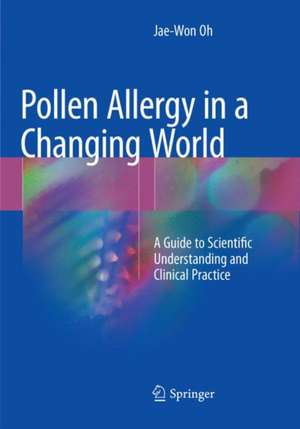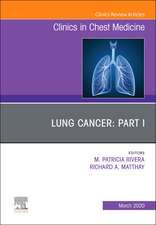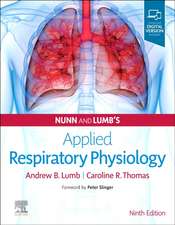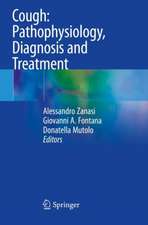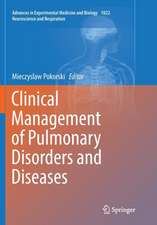Pollen Allergy in a Changing World: A Guide to Scientific Understanding and Clinical Practice
Autor Jae-Won Ohen Limba Engleză Paperback – 10 ian 2019
| Toate formatele și edițiile | Preț | Express |
|---|---|---|
| Paperback (1) | 626.34 lei 38-44 zile | |
| Springer Nature Singapore – 10 ian 2019 | 626.34 lei 38-44 zile | |
| Hardback (1) | 1093.96 lei 3-5 săpt. | |
| Springer Nature Singapore – 23 noi 2023 | 1093.96 lei 3-5 săpt. |
Preț: 626.34 lei
Preț vechi: 659.30 lei
-5% Nou
Puncte Express: 940
Preț estimativ în valută:
119.96€ • 123.59$ • 100.49£
119.96€ • 123.59$ • 100.49£
Carte tipărită la comandă
Livrare economică 20-26 februarie
Preluare comenzi: 021 569.72.76
Specificații
ISBN-13: 9789811338557
ISBN-10: 9811338558
Pagini: 181
Ilustrații: XIII, 181 p. 135 illus., 113 illus. in color.
Dimensiuni: 178 x 254 mm
Greutate: 0.52 kg
Ediția:Softcover reprint of the original 1st ed. 2018
Editura: Springer Nature Singapore
Colecția Springer
Locul publicării:Singapore, Singapore
ISBN-10: 9811338558
Pagini: 181
Ilustrații: XIII, 181 p. 135 illus., 113 illus. in color.
Dimensiuni: 178 x 254 mm
Greutate: 0.52 kg
Ediția:Softcover reprint of the original 1st ed. 2018
Editura: Springer Nature Singapore
Colecția Springer
Locul publicării:Singapore, Singapore
Cuprins
I. Introduction.- 1. What is an allergy?.- 2. Why doses a person become allergic?.- 3. Factors influencing clinical significance of aeroallergens.- 4. The importance of pollen counts.- 5. Why collect and identify pollens?.- II. Pollen collection.- 1. Purpose of standardized air sampling.- 2. Samplers.- 3. Pollen Sampling Methods.- 4. Operation.- III. Pollen identification.- 1. The appearance of airborne grass pollen grains.- 2. Other airborne pollen grains.- IV. Allergenic pollen images.- 1. Single grains (Monads) without apertures.- 2. Single grains with furrows.- 3. Single grain with apertures.- V. Classification of Allergenic plants.- 1. Anatomy of plant.- 2. Taxonomy.- VI. Pollen allergy and meteorological factors.- 1. Effects of weather on allergen load and pollen potency.- 2. Pollen calendars.- 3. Effects of weather on pollen flight.- 4. Forecast the pollen concentration.- VII. How does climate change influence allergenic pollen?.- 1. Thunderstorm-related asthma.- 2. Mechanisms for thunderstorm asthma.- VIII. How to diagnose the pollen allergy.- 1. Skin Prick Test.- 2. Intradermal Skin Test.- 3. Allergy Blood Tests.- IX. How to treat and prevent the pollen allergy.
Notă biografică
Jae-Won Oh, MD, PhD, FAAAAI, Hanyang University College of Medicine, Department of Pediatrics, Seoul, South Korea
Textul de pe ultima copertă
This book presents the latest scientific knowledge on the role of pollens in triggering respiratory allergies and offers up-to-date guidance on the diagnosis, treatment, and prevention of pollen allergy. Detailed information is supplied on allergenic plants and on the complex associations between pollen allergy and local weather conditions, air pollution, and climate change. Readers will learn how climate change in particular is impacting on pollen concentrations, pollen allergenicity, the pollen season, and plant and pollen distribution. A further important feature is the presentation of a forecasting system for allergenic pollens that takes into account a variety of meteorological factors and is designed to be of benefit to allergy patients. This up-to-date scientific knowledge is complemented by clear guidance on all aspects of the management of pollen allergy. The closing chapters address global trends in allergy research and future prospects for pollen allergy. The book will appeal both to researchers seeking state of the art information on the topic and to clinicians wishing to optimize patient care.
Caracteristici
Explores the increasingly important role of pollens as causative and triggering agents in respiratory allergies Identifies the impacts that climate change is having on allergenic plants and pollen allergy Describes how to diagnose, treat, and prevent pollen allergy Presents a state of the art forecasting system for allergenic pollens
